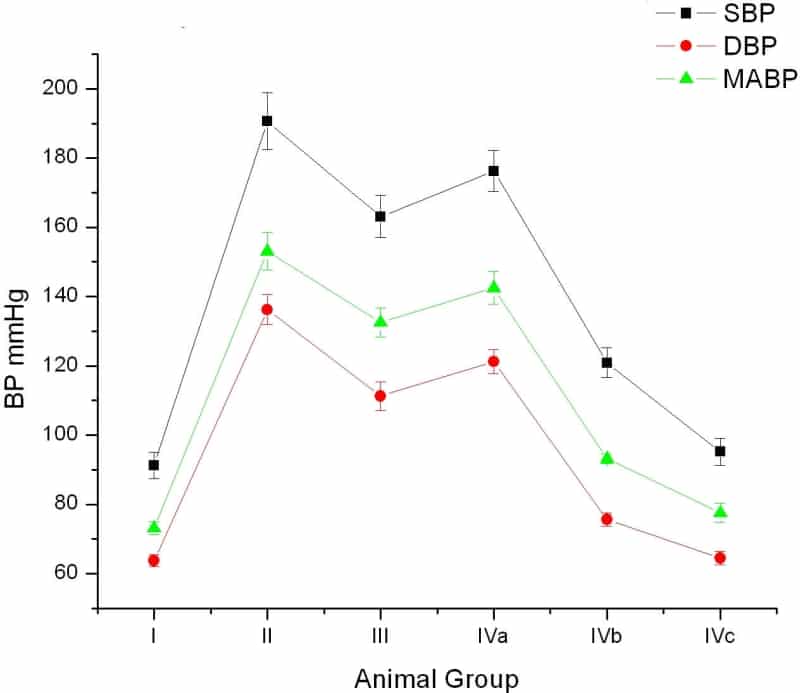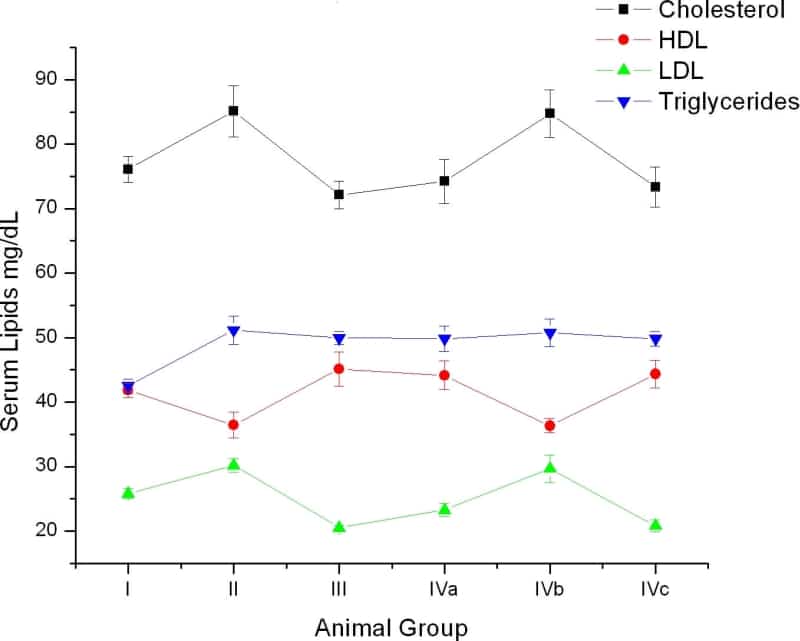Induction of hypertension using DOCA-salt resembles in many aspects essential hypertension in human. Most of the pathophysiological aspects of this type may be contributed to the high level of serum Na+ and the presence of Na+ sensitivity. In the present study we demonstrated the prophylactic and therapeutic effects of oral KCl administration in hypertensive rats. Rats were divided into 4 main groups: group I, normotensive control group (8 rats); group II, hypertensive control group (8 rats); group III: concomitant K+-treated hypertensive group (8 rats); and group IV, hypertensive-treated group (24 rats). Group IV was further subdivided into 3 sub-groups: IVa, K+-treated (8 rats); IVb, angiotensin converting enzyme inhibitor (ACE-I)-treated; and IVc, combined K+ and ACE-I-treated. Hypertension was induced using DOCA (deoxycorticosterone acetate)-salt rat model (50mg/kg s.c. once weekly and 1% NaCl in drinking water for 4 weeks). Treatment with oral KCl (1.1 mEq/100g bw), ACE-I (7.5 mg/kg bw/day) or both continued for 4 more weeks. In group III (prophylactic group), treatment with KCl started with induction of hypertension and continued also through the 4 week treatment period. At the end of the treatment period, animals were fasted and we measured: systolic (SBP), mean arterial (MABP) and diastolic blood pressure (DBP). We then calculated: fasting serum lipids; serum Na+ and K+ levels (taking retro-orbital blood samples); 24 h urine and urinary Na+ and K+ levels. Animals were humanely killed at the end of the experiments. In this study, mean values of SBP, DBP and MABP were significantly higher (P<0.001) in the hypertensive group when compared with the normotensive control group. Treatment with K+ resulted in significant reduction of ABP, DBP and MABP levels in the concomitant K+-treated group (P<0.05) and K+-treated hypertensive group (P<0.05) when compared with the hypertensive control group. The combined use of K+ with ACE-I resulted in a significant reduction in SBP, DBP and MABP levels in the hypertensive rats (P<0.001, P<0.001 and P<0.05) when compared with the control, K+-treated and ACE-I-treated hypertensive groups, respectively. Supplementation and treatment with K+ resulted in a significant decrease (P<0.05) in serum Na+ level while significant increase (P<0.05) in serum K+ level was observed coinciding with a significant increase in urinary Na+ levels. Treatment with K+ resulted in significant decrease (P<0.05) in serum cholesterol and LDL levels and significant increase (P<0.05) in serum HDL level. Induction of hypertension using DOCA-salt resembles in many aspects essential hypertension in human. Most of the pathophysiological aspects of this type may be contributed to the high level of serum Na+ and the presence of Na+ sensitivity. From our data, we can conclude that oral K+ administration causes improvement of the pathophysiological effects of DOCA-salt-induced hypertension in rats through natriuresis, similar to that of ACE-I. The prophylactic antihypertensive effect of KCl was more obvious than its therapeutic effect in this study.
University of Bristol (2005) J Physiol 567P, PC101
Poster Communications: Prophylactic and therapeutic effects of potassium administration in hypertensive rats
Abdelsalam, Yahya Mohamed Naguib; Hanafy, Mohamed; Abdelrazek, Hesham; Saleh, Sohair;
1. School of Biomedical Sciences, Faculty of Biological Sciences, Leeds, United Kingdom. 2. Physiology Department, Faculty of Medicine, Minufiya, Egypt.
View other abstracts by:
Figure 1. Effect of K+ on ABP. All data are expressed as mean ± S.E.M. Statistics were made using Student's t test.
Figure 2. Effect of K+ on serum lipids.
Where applicable, experiments conform with Society ethical requirements.


